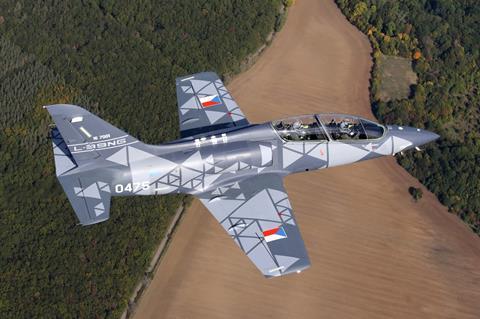Several months after an artificially intelligent software program beat an experienced fighter pilot in a simulated aerial dogfight, the US Defense Advanced Research Projects Agency (DARPA) is moving on to the next phase of its Air Combat Evolution (ACE) programme: teaching autonomous programs to team with human pilots in combat.
The research agency recently awarded contracts to five companies to develop air combat manoeuvering algorithms for individual and team tactics. The firms awarded contracts under Technical Area 1 of the ACE programme are Boeing, EpiSci, Georgia Tech Research Institute, Heron Systems and physicsAI.

“Each team is tasked with developing artificial intelligence agents that expand one-on-one engagements to two-on-one and two-on-two within-visual-range aerial battles,” says DARPA. “The companies’ algorithms will be tested in each of three programme phases: modelling and simulation, sub-scale unmanned aircraft, and full-scale combat representative aircraft scheduled in 2023.”
DARPA wants awardees to build on first-generation autonomous dogfighting algorithms demonstrated in the AlphaDogfight Trials in August, the event which showed a human fighter pilot being beaten by an artificially intelligent program. That software program, Falcon AI, was developed by defence contractor Heron Systems.
“We will be evaluating how well each performer is able to advance their algorithms to handle individual and team tactical aircraft behaviours, in addition to how well they are able to scale the capability from a local within-visual-range environment to the broader, more complex battlespace,” says US Air Force Colonel Dan Javorsek, programme manager in DARPA’s Strategic Technology Office.
The ACE programme is designed to advance artificially intelligent dogfighting software, as well as increase trust in such autonomous programs so that human pilots might be able to rely on unmanned air vehicles (UAVs) in future combat situations. That work might eventually merge with The US Air Force Research Laboratory’s Skyborg programme, a parallel effort to develop an artificially intelligent loyal wingman UAV.
Ultimately, DARPA wants its ACE programme to contribute to its vision of Mosaic Warfare, a futuristic warfighting concept where the USA would overwhelm an enemy with a large and varied force of autonomous weapons, supervised by humans.
In addition to Technical Area 1, ACE programme awardees are pushing forward development on three other complimentary areas at once, says DARPA.
Technical Area 2 awardee SoarTech is developing an experimental methodology for modelling and measuring pilot trust in dogfighting autonomy. It is also looking at new human-machine interfaces.
Technical Area 3 awardees Dynetics and Lockheed Martin are developing a data set and model to evaluate how well the Technical Area 1 algorithms scale to larger, more complex multiple aircraft scenarios.
Technical Area 4 awardee Calspan is supplying a modified Aero Vodochody L-39 Albatros jet trainer for the 2023 real-life demonstration of the various ACE software programs. A human safety pilot will fly on board to supervise the autonomous flight. Prior to use of the full-scale jet, the programme plans to demonstrate the technology on subscale unmanned remote controlled aircraft.



























